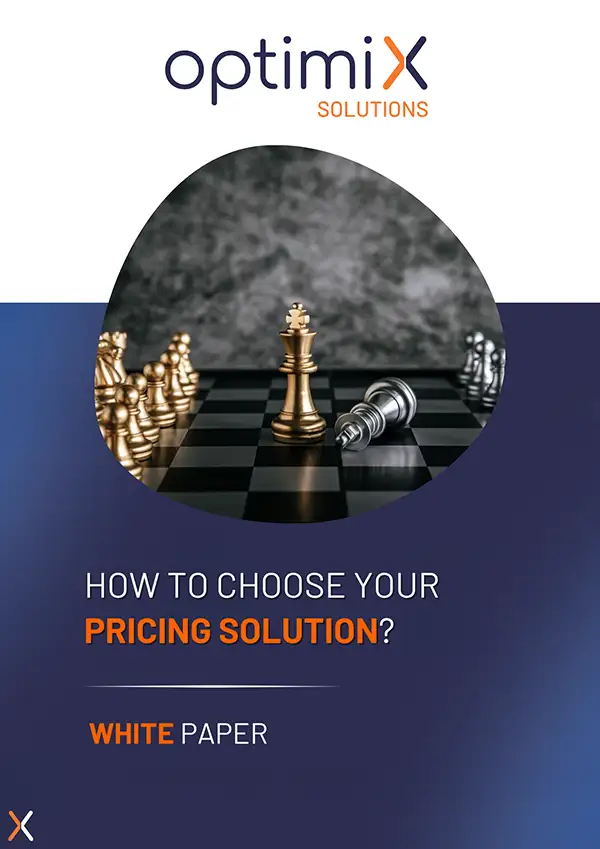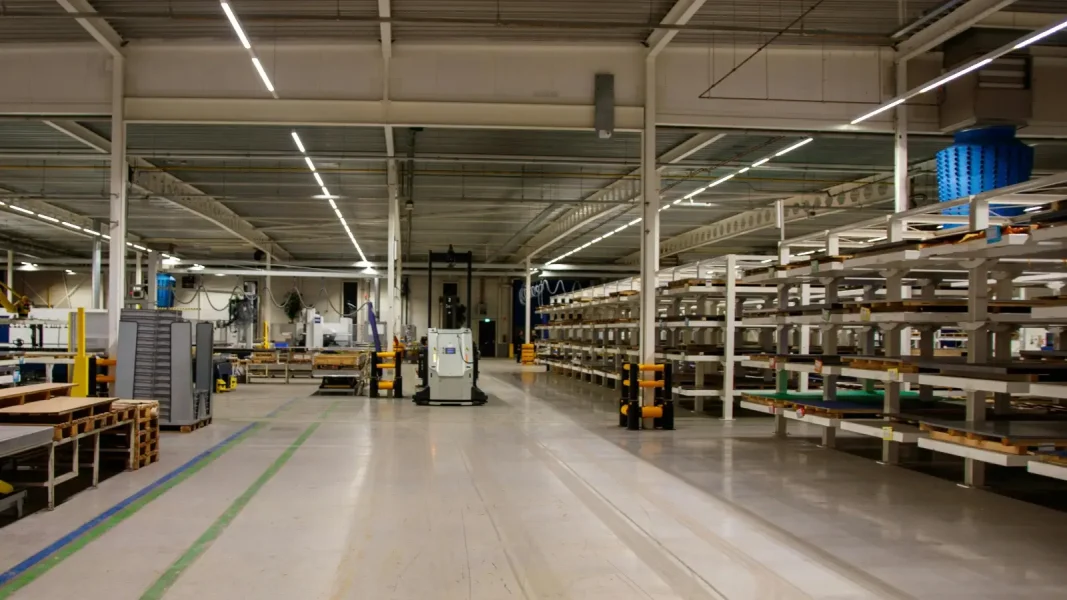According to McKinsey, a 1% improvement in price can boost operating margin by up to 11%. This figure is a reminder that priceis the most powerful and direct lever for profitability. available to companies. In many cases, however, the price setting remains intuitive, rigid or partially disconnected from market reality.
The emergence ofartificial intelligence (AI) in pricing strategies is revolutionizing these practices. It not only makes it possible to to better understand price dynamics, but also to vary them intelligently depending on the context: demand, competition, buying behavior, distribution channels or product lifecycle. It’s no longer a question of simply “defining a price”, but of manage a lively, autonomous pricing system geared to maximizing profit.
In this article, we analyze how AI is profoundly transforming the way to build an effective effectivepricing policy . We’ll retrace the evolution of pricing, explore the underlying technologies (Machine Learning, Deep Learning, RMS systems), identify the most important concrete operational (reactivity, customization, forecast accuracy).
From intuition to intelligent pricing: the evolution of pricing
Historically pricing was based on the manager’s or salesperson’s experience, an intuitive logic often influenced by the competition or a sense of value. This approach, although rapid, showed its limits in volatile environments where the customer dataCustomer data, buying behavior and market signals are constantly evolving.
Companies then structured their pricing policies around a set of rules: fixed grids, competitive alignment, surcharges or discounts, etc . seasonality. This provided a degree of consistency, but no real agility.
With the rise of Big Data and analysis toolsa new era has opened up: that of data-assisted pricing. Companies have begun to integrate elements such as :
- L’price elasticity in different segments segments
- Unit costs and margins
- Conversion and abandonment rates by distribution channel
But the real breakthrough has come with the introduction of intelligent pricing toolspowered byartificial intelligencecapable of learning, anticipating and acting on performance. These tools and technologies, at the service of pricing strategy bring new life to pricing strategies.
What is a pricing algorithm?
A pricing algorithm is an automated decision engine that calculates or adjusts prices according to specific rules, data and objectives. It can be simple or extremely sophisticated, depending on the level of intelligence and personalization required. It can therefore take into account :
Customer behavior (purchase history, price sensitivity)
Competitors’ prices
Available stocks
Target costs and margins
Sales rules (discounts, promotions, minimum thresholds)
Market contexts (seasonality, events, location)…
Key technologies behind artificial intelligence algorithms
AI algorithms in pricing strategy is not limited to automating existing rules. It is based on a number of interconnected disciplines that transform pricing information systems into genuinedecision support.
1. Machine Learning (ML)
The ML is used to dynamically vary prices, based on massive data sets. massive data sets sales history, purchasing behavior, reservation volumes reservationsbooking volumes fill ratesreactions to promotions. Predictive models estimate the probability of purchase according to the sales pricetime, channel and customer profile.
2. Deep Learning (DL)
The Deep Learning complements ML by processing unstructured data (customer reviews, comments, images, etc.). It provides a more detailed understanding of perceived value and the factors that influence purchasing decisions. This analysis feeds the price discrimination and differential pricing.
3. predictive analysis
Combining the above with techniques such as decision trees or neural networks enables us to anticipate demand, identify dynamic segments and adapt prices even before the market moves.
The strategic benefits of pricing driven by an AI-powered pricing tool
Today, the adoption of an intelligent pricing strategy, based on artificial intelligence technologies, is a key performance driver. Whether algorithmic pricing platforms, Revenue Management Systems (RMS) or advanced pricing business intelligence solutions, these tools are profoundly redefining pricing management practices.
Integrated into existing information systems (ERP, CRM, e-commerce platforms), they are no longer simple adjustment modules: they become strategic optimization engines, capable of steering profitability in real time and reinforcing the link between internal data, market signals and customer behaviour. linking internal data, market signals and customer behavior.
Optimizing sales performance
AI-powered pricing solutions like the one from XPA- Optimix Pricing Analyticscontinuously exploit complex data streams on demand, elasticity, customer behavior, costs and perceived value to adjust prices with surgical precision. They enable :
- Maximizing margins without compromising competitiveness
- Boost sales in off-peak periods
- Segment offers to build loyalty among specific customer profiles
- Protecting margins on sensitive categories
- Match product features to the customer’s willingness to pay
- Increased team productivity
AI thus becomes a strategic decision-making tool, capable of identifying the right price, for the right segment, at the right time, on the right channel. Pricing management moves from a reactive to a proactive logic.
Responsive to market signals
One of the major advantages of intelligent pricing algorithms is their ability to react instantly to market fluctuations. Unlike static or semi-automated models, dynamic pricing relies on real-time data to adjust prices according to exogenous or endogenous signals.
Typical cases of automated adjustment :
- Sudden spike in demand, detected via web traffic or purchase intentions
- Changes in competitor prices captured by price monitoring modules
- Aggressive promotional campaign, requiring tactical repositioning
- Exogenous event (weather, shortage, geopolitical context) impacting supply or demand
These adjustments are orchestrated by prediction algorithms, segmentation and configurable optimization rules. The linking market signals and pricing strategies becomes a structural competitive advantage.
Large-scale price customization
Intelligent pricing tools enable the deployment of personalized pricing on an industrial scale. By cross-referencing CRM data, purchase histories and browsing behavior, they adjust prices according to pricing rules, reinforcing :
- Customer loyalty
- image price
- The relevance of the offer
- Perceived price positioning
- Fine matching between product, perceived value and target segment
Accurate forecasts and early steering
The predictive models integrated into RMS provide reliable demand projections, essential for :
- Automate promotional campaigns
- Define dynamic pricing policies
- Optimizing supply chain planning
- Anticipate the linking seasonality, external events and purchasing behavior
The challenges of ia-driven pricing
Adopting an AI-based approach to underwriting is more than simply plugging an algorithm into existing management software. It’s about global digital transformation which impacts on processes, tools and the performance of internal resources. The success of such a project depends first and foremost on the quality of data collected and real-time accessibility: transactional, behavioral, competitive, CRM or digital channel data.
This data must then be integrated into pricing tools able to structure, cross-reference and visualize key information to guide pricing decisions. The implementation of pricing dashboards become essential for monitoring performance, adjusting strategies, and detecting deviations.
Last but not least, this transformation implies an increase in team skills, with the emergence of hybrid profiles: data scientists, pricing analysts, pricing strategy consultantscapable of interpreting models and linking algorithmic logic to business objectives.
However, this automation also raises major ethical issues. Algorithmic opacity can undermine customer confidence if pricing rules become incomprehensible or unjustified. The perception of price discrimination, or a price war fed by competing systems, are all risks that need to be managed by clear, responsible algorithmic governance. Success therefore lies in the balance between technological efficiency, human management and transparency to the customer.
Intelligent pricing: towards an AI-enhanced pricing strategy
Pricing is entering a new era: that of augmented intelligence, capable of combining algorithmic precision, operational agility and strategic relevance. Far from being a simple calculation between cost and margin, it is becoming a pillar of competitiveness, at the intersection of marketing, data science and digital transformation.
Thanks to artificial intelligence, companies now have the means to steer their prices in real time, segment their pricing policies finely, and align their value strategy with concrete market expectations. RMS tools, analytics platforms and dynamic pricing engines are no longer options: they are imperative for modern, responsive and differentiating pricing.
But this technological advance also calls for changes in organization, skills and attitudes. It calls for more responsible tariff governance, integrating the issues of transparency, fairness and trust. Because tariff performance will only be sustainable if it is based on a balance between technological power and human intelligence.







